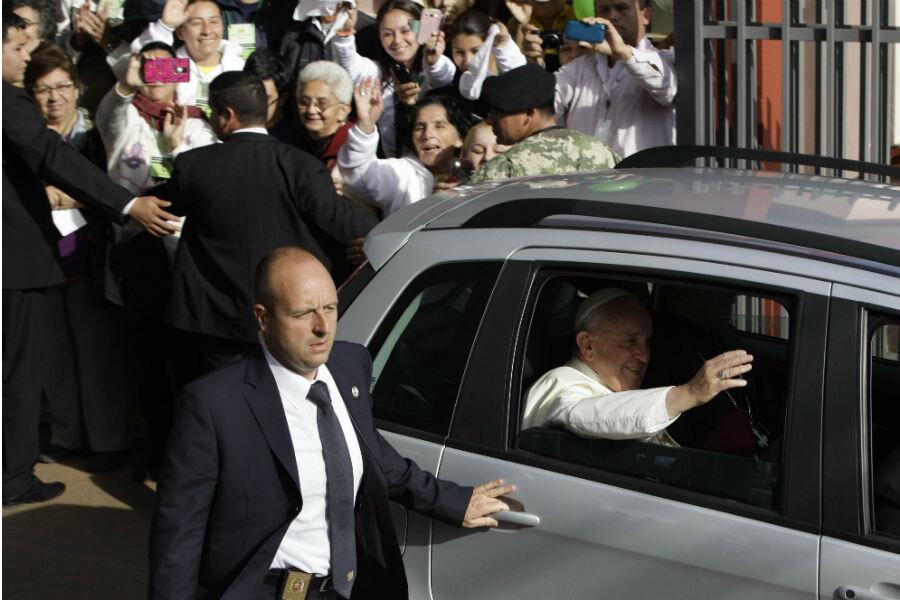Why is Pope Francis traveling in a 1988 Peugeot?
Loading...
"It seems to still work," a Vatican spokesman, the Rev. Federico Lombardi, said of the old white Peugeot that Pope Francis used during on his visit Saturday to Paraguay, the last leg of a three-nation trip to Latin America.
The humble decision to use the same car used 27 years ago when St. John Paul II visited as pope in 1988 is not surprising. This is a pope who got the keys to a fully loaded M-Class Mercedes-Benz when he became head of the Catholic Church, but who prefers a modest Ford Focus when tooling around the Vatican.
Such decisions are a departure from previous popes, who over the past century have mostly been chauffeured in Mercedes Benz vehicles. “Vatican mystic white” was the color of the last pontiff, Pope Benedict XVI’s Mercedes G500, according to Digital Trends.
Pope Francis appears more attuned to the messages Roman Catholic leaders send by their transportation choices.
"It hurts me when I see a priest or a nun with the latest model car, you can't do this," he said, exhorting young members of the Catholic church to be humble.
"A car is necessary to do a lot of work, but please, choose a more humble one. If you like the fancy one, just think about how many children are dying of hunger in the world," he said in 2013, according to Reuters.
On a visit to the Middle East, his first, this past May, Pope Francis dismissed the idea of a bulletproof vehicle, though most heads of state elect to travel that way. He insisted that he travel in a "normal car," allowing him to be as close to people as possible, the Vatican said, according to Reuters.
This most recent trip to Ecuador, Bolivia, and Paraguay is based on “the pope’s criteria,” a Vatican spokesman said on Tuesday, saying that Francis was determined “to visit even those countries that aren’t geopolitically at the top rank of the world panorama,” according to Crux.
The trip to South America has emphasized this pope's focus on poverty and social justice issues with visits to an overcrowded prison, a slum, and an under-resourced pediatric hospital. The used car in Paraguay, in a nation defined by an enormous divide between rich and poor, signals a pontiff attuned to his role as a servant to the world’s 1.2 billion Catholics.
As Pope Francis said at a recent Mass, “There is no witness without a coherent lifestyle!”







